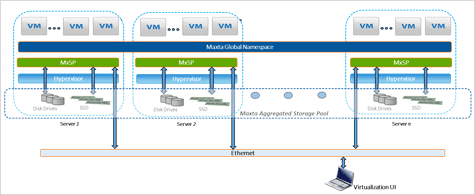In an era where it’s become increasingly practical to make use of storage resources that are tightly coupled to virtual machines running on servers, Maxta wants to finally force the issue.
This week, Maxta unveiled its namesake software that turns Flash and magnetic storage running on a server into a resource that can be shared by multiple virtual machines.
According to Maxta CEO Yoram Novick, the amount of Flash and magnetic storage that can now be directly attached to a server makes any form of primary storage attached to a network seem archaic. From a performance perspective, Novick says it’s critical to eliminate the latency that network storage introduces to the virtualization environment.
Novick is not advocating that IT organizations should abandon network storage altogether. Maxta software creates a dynamic pool of primary storage resources on the server than can be deployed alongside existing network storage systems. But when it comes to virtual machines, he is advocating that a server-centric approach to primary storage is not only better, it’s required. The reason for this is that most storage system architecture was designed for physical servers. Virtualization, says Novick, requires a fundamentally different approach to primary storage when multiple workloads are sharing the same physical server.
Ultimately, Novick contends that a server-centric approach to primary storage eliminates much of the complexity that plagues IT organizations today. Instead of having to employ different specialists to manage the virtual machines and storage, the Maxta software is designed to give virtualization administrators more control over storage resources. That doesn’t necessarily eliminate the need for a storage administrator, but Novick says it does mean that storage administrators will no longer have to spend all day provisioning storage volumes.
Sometimes it takes a while for the way IT is managed to catch up with disruptive technologies. Virtualization is a primary case in point. It will be interesting to see in time how much primary storage migrates to the server, and just as importantly, who winds up managing it in the IT organization.




